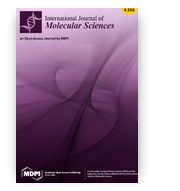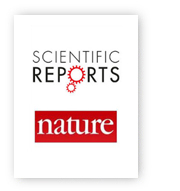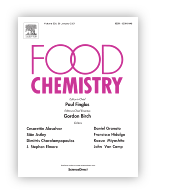The Resistance of Narrow-Leafed Lupin to Diaporthe toxica Is Based on the Rapid Activation of Defense Response Genes
Michał Książkiewicz, Sandra Rychel-Bielska, Piotr Plewiński, Maria Nuc, Witold Irzykowski, Małgorzata Jędryczka, Paweł Krajewski
International Journal of Molecular Sciences
 Narrow-leafed lupin (Lupinus angustifolius L.) is a grain legume crop that is advantageous in animal nutrition due to its high protein content; however, livestock grazing on stubble may develop a lupinosis disease that is related to toxins produced by a pathogenic fungus, Diaporthe toxica. Two major unlinked alleles, Phr1 and PhtjR, confer L. angustifolius resistance to this fungus. Besides the introduction of these alleles into modern cultivars, the molecular mechanisms underlying resistance remained unsolved. In this study, resistant and susceptible lines were subjected to differential gene expression profiling in response to D. toxica inoculation, spanning the progress of the infection from the early to latent phases. High-throughput sequencing of stem transcriptome and PCR quantification of selected genes were performed. Gene Ontology term analysis revealed that an early (24 h) response in the resistant germplasm encompassed activation of genes controlling reactive oxygen species and oxylipin biosynthesis, whereas in the susceptible germplasm, it comprised induction of xyloglucan endotransglucosylases/hydrolases. During the first five days of the infection, the number of genes with significantly altered expressions was about 2.6 times higher in resistant lines than in the susceptible line. Global transcriptome reprogramming involving the activation of defense response genes occurred in lines conferring Phr1 and PhtjR resistance alleles about 4–8 days earlier than in the susceptible germplasm.
Narrow-leafed lupin (Lupinus angustifolius L.) is a grain legume crop that is advantageous in animal nutrition due to its high protein content; however, livestock grazing on stubble may develop a lupinosis disease that is related to toxins produced by a pathogenic fungus, Diaporthe toxica. Two major unlinked alleles, Phr1 and PhtjR, confer L. angustifolius resistance to this fungus. Besides the introduction of these alleles into modern cultivars, the molecular mechanisms underlying resistance remained unsolved. In this study, resistant and susceptible lines were subjected to differential gene expression profiling in response to D. toxica inoculation, spanning the progress of the infection from the early to latent phases. High-throughput sequencing of stem transcriptome and PCR quantification of selected genes were performed. Gene Ontology term analysis revealed that an early (24 h) response in the resistant germplasm encompassed activation of genes controlling reactive oxygen species and oxylipin biosynthesis, whereas in the susceptible germplasm, it comprised induction of xyloglucan endotransglucosylases/hydrolases. During the first five days of the infection, the number of genes with significantly altered expressions was about 2.6 times higher in resistant lines than in the susceptible line. Global transcriptome reprogramming involving the activation of defense response genes occurred in lines conferring Phr1 and PhtjR resistance alleles about 4–8 days earlier than in the susceptible germplasm.
10.3390/ijms22020574
Temperature driven hibernation site use in the Western barbastelle Barbastella barbastellus (Schreber, 1774)
Luc De Bruyn, Ralf Gyselings, Lucinda Kirkpatrick, Alek Rachwald, Tomasz Kokurewicz, Grzegorz Apoznański
Scientific Reports
 In temperate regions, winter is characterized by cold temperatures and low food availability. Heterothermic animals can bridge this period by entering a state of torpor characterized by decreased body temperature and reduced metabolic rate. Hibernation site choice is crucial since temperature conditions in the hibernaculum will impact torpor. We analysed temperature-dependent hibernation site use of Barbastella barbastellus. Bats and temperature were monitored in an underground system (1999–2019) and standalone bunkers (2007–2019) in Western Poland. During the winter of 2017–2018 we analysed the thermal variability of the hibernacula. Seasonal variation is higher in bunkers and thus temperatures get colder in winter than in the underground system. On the other hand, shortterm variability (thermal variability index) in the bunkers was lower than in the underground system. This makes bunkers a more stable environment to hibernate for cold dwelling bats in warm winters, when temperatures in the bunkers do not get below freezing. Bats use both the warm underground system and the colder bunkers. During the last decade, a continuous series of warm winters occurred and the population of barbastelle bats partly moved from the underground system to the bunkers. These present temperature increases broadened the range of potential hibernation sites for barbastelles. Our study indicates that long-term trends, seasonal variation and short-term variability in temperatures are all important and should be analysed to investigate hibernaculum use by bats. Our study shows that small hibernation sites may become more important in the future.
In temperate regions, winter is characterized by cold temperatures and low food availability. Heterothermic animals can bridge this period by entering a state of torpor characterized by decreased body temperature and reduced metabolic rate. Hibernation site choice is crucial since temperature conditions in the hibernaculum will impact torpor. We analysed temperature-dependent hibernation site use of Barbastella barbastellus. Bats and temperature were monitored in an underground system (1999–2019) and standalone bunkers (2007–2019) in Western Poland. During the winter of 2017–2018 we analysed the thermal variability of the hibernacula. Seasonal variation is higher in bunkers and thus temperatures get colder in winter than in the underground system. On the other hand, shortterm variability (thermal variability index) in the bunkers was lower than in the underground system. This makes bunkers a more stable environment to hibernate for cold dwelling bats in warm winters, when temperatures in the bunkers do not get below freezing. Bats use both the warm underground system and the colder bunkers. During the last decade, a continuous series of warm winters occurred and the population of barbastelle bats partly moved from the underground system to the bunkers. These present temperature increases broadened the range of potential hibernation sites for barbastelles. Our study indicates that long-term trends, seasonal variation and short-term variability in temperatures are all important and should be analysed to investigate hibernaculum use by bats. Our study shows that small hibernation sites may become more important in the future.
Evaluation metrics and validation of presence-only species distribution models based on distributional maps with varying coverage
Kamil Konowalik, Agata Nosol
Scientific Reports
 We examine how different datasets, including georeferenced hardcopy maps of different extents and georeferenced herbarium specimens (spanning the range from 100 to 85,000 km2) influence ecological niche modeling. We check 13 of the available environmental niche modeling algorithms, using 30 metrics to score their validity and evaluate which are useful for the selection of the best model. The validation is made using an independent dataset comprised of presences and absences collected in a range-wide field survey of Carpathian endemic plant Leucanthemum rotundifolium (Compositae). Our analysis of models’ predictive performances indicates that almost all datasets may be used for the construction of a species distributional range. Both very local and very general datasets can produce useful predictions, which may be more detailed than the original ranges. Results also highlight the possibility of using the data from manually georeferenced archival sources in reconstructions aimed at establishing species’ ecological niches. We discuss possible applications of those data and associated problems. For the evaluation of models, we suggest employing AUC, MAE, and Bias. We show an example of how AUC and MAE may be combined to select the model with the best performance.
We examine how different datasets, including georeferenced hardcopy maps of different extents and georeferenced herbarium specimens (spanning the range from 100 to 85,000 km2) influence ecological niche modeling. We check 13 of the available environmental niche modeling algorithms, using 30 metrics to score their validity and evaluate which are useful for the selection of the best model. The validation is made using an independent dataset comprised of presences and absences collected in a range-wide field survey of Carpathian endemic plant Leucanthemum rotundifolium (Compositae). Our analysis of models’ predictive performances indicates that almost all datasets may be used for the construction of a species distributional range. Both very local and very general datasets can produce useful predictions, which may be more detailed than the original ranges. Results also highlight the possibility of using the data from manually georeferenced archival sources in reconstructions aimed at establishing species’ ecological niches. We discuss possible applications of those data and associated problems. For the evaluation of models, we suggest employing AUC, MAE, and Bias. We show an example of how AUC and MAE may be combined to select the model with the best performance.
10.1038/s41598-020-80062-1
Chemometric contribution for deeper understanding of thermally-induced changes of polyphenolics and the formation of hydroxymethyl-L-furfural in chokeberry powders
Anna Michalska-Ciechanowska, Jessica Brzezowska, Aneta Wojdyło, Agnieszka Gajewicz-Skretna, Ewa Ciska, Joanna Majerska
Food Chemistry
 During fruit juice powdering process numerous alterations may occur as a result of interactions of native bioactives and carriers. The objective was to investigate the effect of carrier addition on the changes in polyphenols’ profile in chokeberry powders obtained by spray- (180 °C), vacuum- (50, 70, 90 °C) and freeze-drying and to evaluate the interactions between bioactives toward formation of process contaminants. Phenolic acids, anthocyanins, flavonols, flavan-3-ols and procyanidins were identified in powders (18.1 – 35.4 g kg−1 dry matter). Vacuum drying at 90 °C resulted in a significant increase in (+)-catechin and HMF contents. The addition of inulin enhanced the generation of HMF compared to maltodextrin. Overall, addition of maltodextrin allowed for better anthocyanins’ retention. Depending on the drying method used, maltodextrin allowed for better retention of polyphenolics during freeze- and vacuum drying, while inulin during spray drying. The elaboration of the results was supported by chemometric analysis.
During fruit juice powdering process numerous alterations may occur as a result of interactions of native bioactives and carriers. The objective was to investigate the effect of carrier addition on the changes in polyphenols’ profile in chokeberry powders obtained by spray- (180 °C), vacuum- (50, 70, 90 °C) and freeze-drying and to evaluate the interactions between bioactives toward formation of process contaminants. Phenolic acids, anthocyanins, flavonols, flavan-3-ols and procyanidins were identified in powders (18.1 – 35.4 g kg−1 dry matter). Vacuum drying at 90 °C resulted in a significant increase in (+)-catechin and HMF contents. The addition of inulin enhanced the generation of HMF compared to maltodextrin. Overall, addition of maltodextrin allowed for better anthocyanins’ retention. Depending on the drying method used, maltodextrin allowed for better retention of polyphenolics during freeze- and vacuum drying, while inulin during spray drying. The elaboration of the results was supported by chemometric analysis.
10.1016/j.foodchem.2020.128335









